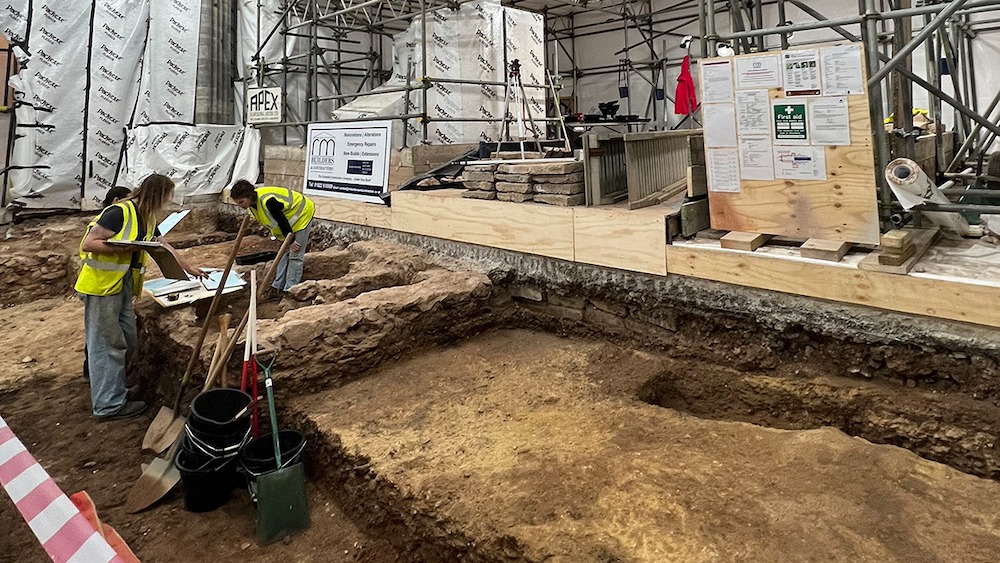Subterranean crypt with empty tombs unearthed at medieval cathedral in England
Ongoing excavations at Exeter Cathedral in England reveal a possible medieval crypt, empty tombs and more.

Archaeologists excavating Exeter Cathedral in England have uncovered the church's 12th-century high altar, a medieval crypt and the empty tombs of two bishops.
The cathedral, constructed around A.D. 1400, resides on the same site as the original building from 1114, when it was built in the Norman architectural style. In 1066, the Normans traveled from Normandy, France, to invade England. Although the two towers of the original structure are now adjoined as part of the nave walls as they appear today, the rest of the Anglican church was rebuilt between roughly A.D. 1270 and 1350 in a decorated Gothic style, according to Smithsonian Magazine.
The excavations are part of an ongoing construction project to install an underfloor heating system. First, they unearthed the altar, where the priest stands during sermons. Once workers removed the flooring in the quire (also spelled choir), the part of the cathedral where the clergy and choir sit during religious services, they revealed the original cathedral's buried floors from 900 years ago — and so much more, according to BBC News.
"Behind the altar, to the east, is a surprisingly deep backfilled area which we think must be a Norman crypt," John Allan, the cathedral's archeologist and an honorary university fellow at the University of Exeter, told BBC News. "This is surely the most exciting archaeological discovery ever made at Exeter Cathedral."
Related: 14th-century sarcophagus found at fire-ravaged Notre Dame Cathedral
The subterranean crypt was filled in around A.D. 1300, a discovery that contradicts the long-held belief that the cathedral never contained one, according to a statement.
Removing the crypt's backfill revealed a set of empty tombs that most likely belonged to two bishops: Robert Warelwast (nephew of William Warelwast, the founding bishop who died circa A.D. 1155) and William Brewer (who died in A.D. 1244). But these empty rooms weren't a surprise; in A.D. 1320, the pair was transferred from their original burial places to the quire, according to the statement.
Get the world’s most fascinating discoveries delivered straight to your inbox.
During a previous dig in March, archaeologists discovered an early Roman street, timber buildings and the wall of a Roman house buried in the cathedral's cloister garden, BBC News reported at the time.
The cathedral is still used by worshippers today as an Anglican church.
Jennifer Nalewicki is former Live Science staff writer and Salt Lake City-based journalist whose work has been featured in The New York Times, Smithsonian Magazine, Scientific American, Popular Mechanics and more. She covers several science topics from planet Earth to paleontology and archaeology to health and culture. Prior to freelancing, Jennifer held an Editor role at Time Inc. Jennifer has a bachelor's degree in Journalism from The University of Texas at Austin.


